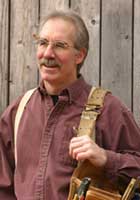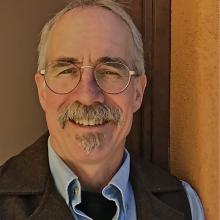 Some years back, at a BuildingEnergy Boston conference, I saw a presentation about a deep-energy retrofit that converted an unremarkable ranch into a net-zero house. It was an inspirational project, but the budget was a million dollars. I remember thinking, “That’s great for you, pal, but I work in the real world.” My customers don’t have that kind of money. And if they did, they’d want to spend it on new kitchens, decadent bathrooms and doubling the size of their homes. I wondered what I could do to change the situation.
Some years back, at a BuildingEnergy Boston conference, I saw a presentation about a deep-energy retrofit that converted an unremarkable ranch into a net-zero house. It was an inspirational project, but the budget was a million dollars. I remember thinking, “That’s great for you, pal, but I work in the real world.” My customers don’t have that kind of money. And if they did, they’d want to spend it on new kitchens, decadent bathrooms and doubling the size of their homes. I wondered what I could do to change the situation.
That last question was the impetus for a session that I proposed at this year’s conference. I’d never done this before, and the first thing I learned is that, like the proverbial mouse who suggests tying a bell on the cat, if you propose a session that gets approved, you have to make it happen—find the speakers, help develop their presentations, etc. I figured, how hard could it be?
Signing up the speakers turned out to be the easy part. In short order, I had Paul Eldrenkamp, Jamie Wolf, Joe Carry and Heather Thompson as panelists with Dan Kolbert as the moderator. I was almost done, right?
Next I proposed a few titles for the session, things like, “Energy Remodeling in the Real World.” I quickly got an email from Paul dismissing my ideas as being “about as lame as you’d expect from someone who’s job description used to include coming up with titles for articles in Fine Homebuilding.” Ouch.
Paul suggested we use the title Retrofit Like You Give a Sh*t: Inspiring homeowners to care about energy, which I had to admit was pretty good. Still, I began to suspect that organizing this session might not be as easy as I had thought.
The next clue came when I pestered participants for a bio and a headshot to post at NESEA.org. Heather wanted to know if she could just copy Dan’s bio. I was pretty sure she was kidding. Paul suggested she use Dan’s headshot, too. I knew he was kidding, but I wondered if they would ever get serious.
That’s when Heather sent an email with a link to a three-piece, silver-lamé suit available from Amazon and recommended that everybody buy one to wear during the session. Paul then suggested that Heather should be focusing more on content (bless his heart), but Heather argued that sales are, in large part, about image, and that the suits would also make everyone look professional during the presentations.
Well, I thought to myself, at least Joe and Jamie aren’t indulging in any of this nonsense. That’s when I got the note from Jamie suggesting we move our email discussion onto NESEA’s community discussion board, so that the entire membership could benefit from the exchange. At this point, I wondered if all of my presenters were bat-sh*t crazy and made a mental note to see if next year I could volunteer to help with the Affordable Comfort/Home Performance conference.
Fortunately, the email exchanges began to get serious
Joe: I think progress in the marketing of sustainability has been driven more by builders than by consumers, especially by builders who have committed to only building with an eye toward sustainability. We all came to this place in different ways, and it would be useful to hear what those ways were.
Paul: I like talking to people about what their house will look like in the year 2050, if we want it to be part of the solution rather than part of the problem. If they ask, I will talk about energy savings in broad numbers, with data from actual projects. But if they’re just thinking about payback, I tell them to hire Mass Save and call it a day. I’m always surprised what a powerful sales tool it can be to mildly hint that a homeowner might not be serious enough to hire us.
Jamie: I think one of the most important things that Paul invites his clients to understand is what I would call their energy budget: Do they know how much energy they use, how it is used, how it is generated, and what opportunities exist to have a more dynamic and aware relationship with their energy use.
Paul: I have just over 8 years left to retirement, and I’m starting to think hard about what sort of work I’ll be leaving in my wake. I wish I had started thinking that way 35 years ago. In my opinion, that’s what our session is about—getting all the people in the room to think that way.
Now we were getting somewhere. I was hopeful again about the session. Then I got an email from Dan and a follow up from Heather.
Dan: I’ve got a whole presentation on powering your house with methane.
Heather: Great idea, Dan! You are an expert.
At this point I started to think that just maybe I had put together the perfect cast of characters to make a conference session that is inspiring, useful, irreverent and funny. Not bad for a first time.
Our Mission
NESEA advances sustainability practices in the built environment by cultivating a cross-disciplinary community where practitioners are encouraged to share, collaborate and learn.





OK, I asked Kevin to write that just so there was someplace to stick this link to a document I created while working on this session - I mean making sausage - with my goofball friends.Actually, I've been involved with NESEA conferences for years and worked with lots of people on lots of sessions. What made this one a treat was Kevin. He's a journalist, so of course he had a concept for this "piece" and a long list of questions for us, his subjects.In order to get my head into the project I decided to sit down and provide four answers to each of his questions. It was like taking an exam. The good part is that it really helped me to clarify my thinking and get down in some logical order a whole bunch of guiding principles that I find myself employing in "the work." Now I had an outline, and my chunk of the presentation fell into place.So here is a link to a document with those questions and answers, should you be inclined to see that thinking laid out, and maybe to wonder how you might answer each question yourself.https://www.dropbox.com/s/v4opogvmto8k6bp/BE%2016%20Retrofit%20Session%20Questions.docx?dl=0Thanks Kevin!